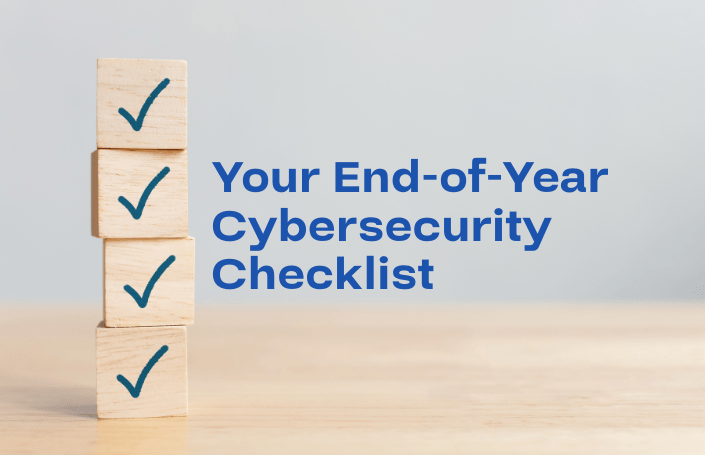Remote Work Best Practices: Securing Your Network and Data

The work landscape has evolved significantly over the past decade, with remote work becoming more common than ever. This shift brings many advantages, such as greater flexibility and improved productivity. However, it also presents unique cybersecurity challenges. Adopting remote work best practices is essential for business owners to protect themselves from potential security risks.
As you and your team embrace this way of working, securing your networks and data is crucial. Implementing effective security measures and staying informed about potential threats will help keep your information safe and ensure smooth business operations. We're here to guide you through these best practices, providing reliable and professional advice to navigate this journey together.
The Rise of Remote Work
Remote work has seen unprecedented growth in recent years. According to a study by Global Workplace Analytics, the number of remote workers has increased by 159% since 2009. This transition was accelerated by global events like the COVID-19 pandemic, which forced many businesses to quickly adapt to remote operations.
Benefits of Remote Work
The benefits of remote work are clear. It offers flexibility and increased productivity, allowing employees to work from anywhere and at any time. This flexibility can lead to a better work-life balance and a happier, more satisfied workforce. Additionally, remote work can save businesses money on overhead costs such as office space and utilities.
Challenges of Remote Work
However, with the rise of remote work comes significant challenges, particularly in cybersecurity. As employees access company networks and data from outside the traditional office setting, the risk of cyber attacks increases. Without proper security measures, sensitive information can be compromised, leading to financial loss and damage to a company's reputation.
A notable example of remote work challenges is the 2020 Twitter hack, where hackers gained access to high-profile accounts and posted scam messages. This incident highlighted the vulnerabilities of remote work and underscored the need for stronger cybersecurity protocols.
We understand that navigating these changes can be daunting, but with the right strategies and precautions, you can enjoy the benefits of remote work while keeping your data secure. We're here to help you every step of the way.
Understanding the Cybersecurity Risks of Remote Work
Remote work environments are particularly vulnerable to cybersecurity risks, including unauthorized access to sensitive data, data breaches, and exposure to malware. By understanding and recognizing common cyber threats, remote workers can better protect themselves and their organizations.
- Phishing Attacks: Cybercriminals use deceptive emails to trick employees into revealing confidential information. Tip: Spot phishing emails by carefully checking the sender's email address for discrepancies and looking out for generic greetings or urgent requests for personal information. Be wary of links and attachments in unsolicited emails.
- Malware: Malicious software can disrupt operations, steal data, or gain unauthorized access to systems. Tip: Spot malware by being cautious of unexpected pop-ups, slow system performance, and unknown programs running in the background. Avoid downloading files or software from untrusted sources and ensure your antivirus software is always up-to-date.
- Ransomware: This type of malware encrypts data and demands payment for decryption. Tip: Spot ransomware by being suspicious of emails with attachments from unknown senders, especially those claiming to be invoices or important documents. Regularly back up your data and avoid opening attachments or links in unsolicited emails.
Being aware of these threats and taking proactive measures can help create a secure remote work environment. We’re here to support you with the tools and knowledge you need to stay safe and productive while working remotely.
Strategic Approaches to Remote Work
While some business owners may stress about keeping remote workers safe from a cybersecurity standpoint, the reality is there are definitely ways to keep your business protected! Technology has come a long way to accommodate workers "on the go."
Here are several ways IT can help support remote workers:
VPNs: the First Line of Defense
A VPN, or Virtual Private Network, provides a secure and encrypted connection between remote workers and the company's network. This protects sensitive data from being intercepted by cybercriminals. Make sure to require employees to use a VPN when accessing company resources.
Implement Multi-Factor Authentication
Multi-factor authentication adds an extra layer of security by requiring users to provide two or more forms of identification before accessing sensitive information. This can include using a password, biometric scan, or one-time code sent to their phone.
Encrypted Communication Tools
Using encrypted communication tools, such as Signal or WhatsApp, can help ensure secure messaging and calls between remote workers. This is especially important for discussing sensitive company information.
Many email providers also have an encryption tool to make emails hard to intercept. For example, Gmail has a feature called “confidential mode” which allows users to set an expiration date for emails and require a passcode to access them.
Regular Security Updates and Patch Management
Regular updates and patches fix security vulnerabilities in software, reducing the risk of cyber attacks. It's crucial to ensure that all systems used by remote workers are kept up to date. This includes not only computers and laptops, but also mobile devices.
Remote workers should be educated on the importance of regularly updating their systems and encouraged to do so. Companies can also implement a patch management system to automate the process and ensure all devices are consistently updated.
Transition to Software as a Service
Traditional software downloaded onto individual computers can be cumbersome for remote teams. Third-party hosted software, or Software as a Service SaaS, offers a compelling alternative, allowing access from any device with an internet connection. This flexibility empowers remote workers and fosters better work-life balance.
Additionally, SaaS eliminates IT burdens like software updates and maintenance, freeing up internal IT resources. Collaboration is also enhanced with built-in features for sharing documents and communicating in real-time. Overall, SaaS provides a secure, scalable, and cost-effective solution for remote workforces, improving productivity and overall efficiency.
Fostering a Culture of Cybersecurity Awareness
A strong security culture is essential for any organization, especially those with remote workers. It starts with educating employees on the importance of cybersecurity and their role in keeping company information safe. Regular training sessions and reminders can help reinforce this message.
Some suggestions for effective cybersecurity training:
- Interactive Workshops: Engage employees with hands-on exercises and real-world scenarios.
- Regular Updates: Keep employees informed about the latest cybersecurity threats and how to mitigate them.
- Accessible Resources: Provide easy access to guides and documentation on cybersecurity best practices.
- Testing & Assessments: One of the most effective ways to foster a culture of cybersecurity awareness is through regular testing and assessments. This can include simulated phishing attacks, password strength tests, and vulnerability scans. By regularly testing employees' knowledge and skills, organizations can identify areas for improvement and provide targeted training.
In addition to training, it's important to have clear policies in place that outline expectations for employee behavior related to cybersecurity. This includes guidelines for using company devices and networks, as well as rules for handling sensitive information. Regular reminders and updates on these policies can help ensure employees are following them consistently.
Ultimately, maintaining strong internal communication practices is crucial in protecting a company's reputation and maintaining the security of its data. By staying vigilant and implementing proper procedures, businesses can protect themselves against the ever-evolving threat of phishing attacks.
Support Your Remote Work Environment with Everound
Securing your network and data in a remote work environment is not just about implementing the right tools—it's about fostering a culture of cybersecurity awareness and vigilance. By adopting these best practices, businesses can create a safe and productive remote work experience.
At Everound, we specialize in evaluating your current remote work security measures and recommending improvements. Our managed IT services ensure that your business stays ahead of potential threats, allowing you to focus on what you do best.
Contact us today to learn more about how we can support your remote work environment and safeguard your business.



